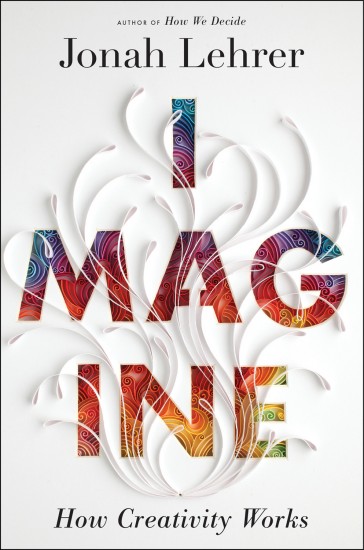

In the agency world, the great divide between the “creative” and “account” sides has been cultivated by a series of stereotypes and stigmas. The “creatives” are often pictured lounging in bean bags, wearing skinny jeans, hair unkempt, surrounded by MAC books, while the tight-laced “account” personalities rotate through an endless array of suits, hurried phone calls and a cubicle dungeon, lest they escape to the dark side of Adobe Illustrator and Photoshop. This archetype seems rather unfair.
I’ve long straddled the two worlds of left verses right brain, viewed by friends and family as creative with a skill set in the work place that skews towards the account side.
When I heard about “Imagine: How Creativity Works” (Houghton Mifflin Harcourt, 2012), I decided to explore my creative/account schism. Jonan Lehrer’s new book suggests we all are created equal on the playing field of innovation. He sets out to find the tipping point on creativity. According to Lehrer, creativity has more catalysts than we know, and everyone has the potential to tap into this well. Lehrer sets out to answer the question as to why some companies, some cities and some individuals are innovating far past the competition.
A few insights I found from Lehrer’s book:
Mo’ Problems, Mo’ Ideas. Without problems we would have no need for creation. Therefore, Lehrer suggests the best way to force our brains to detour off the obvious path in problem solving is to hit a wall. It’s when we’ve beaten our brains to a pulp and given up that our brains start to divvy off into the gray. The left hemisphere of our brain wants to confront problems head on, take the literal meaning and find the logical answer. Our right hemisphere is reading between the lines and gathering cognitive intel to play a weird mix and match of all the random info that we carry until…BAM, or as it’s more commonly referred to “light bulb.” Without constraints to work within, our brain would never be forced to find the workaround to solve the problem.
Productive Daydreaming. Seems like an oxymoron right? Humans have a tendency to be absent minded, to let the mind wander down rabbit holes of thought. Studies of fMRI’s demonstrate that the brain is incredibly active while in a “neutral state,” thus giving it time to rummage through its internal database and tap into a fountain of memories and information. This relaxed manner of association helps form connections and relationships — a strategy that many innovative companies, such as Google and Intel, actively promote.
Creativity was not meant to be an individual sport. We rely on our social circles and acquaintances to give us a broader scope for making connections and forming novel thoughts. People who have a large group of acquaintances are more likely to innovate than those with a small group of close relationships. Makes sense right? More brains, more interests and more information brings you out of your closed circle. Networking is vital to the success of innovation.
The potential for creativity is inherent in each of us. Creativity is simply the endless search for answers, the refusal to accept that there is no answer and the will to keep plodding through the obvious. This is what Lehrer refers to as the “ability to stick with a problem until it surrenders.” It is skill to be practiced, improved and capitalized.
What methods and rituals do you indulge in when seeking creative inspiration?
Jonah Lehrer’s Talks New Book on Vimeo


